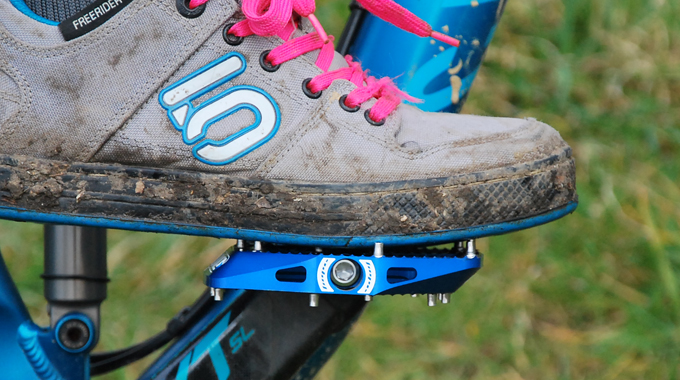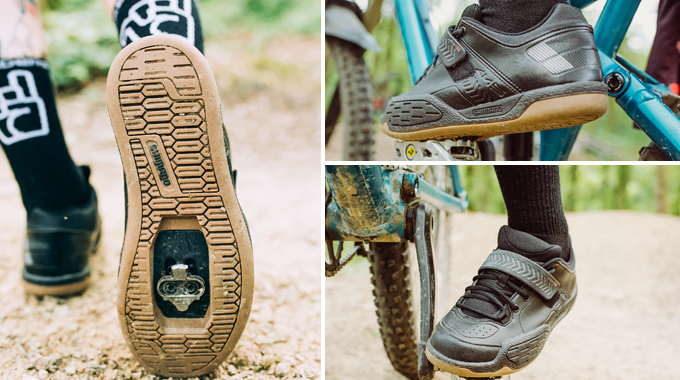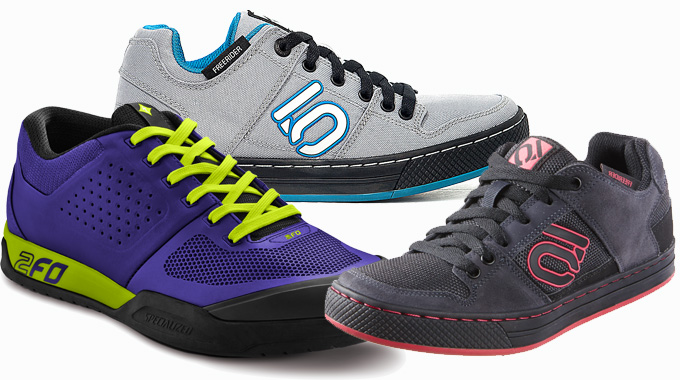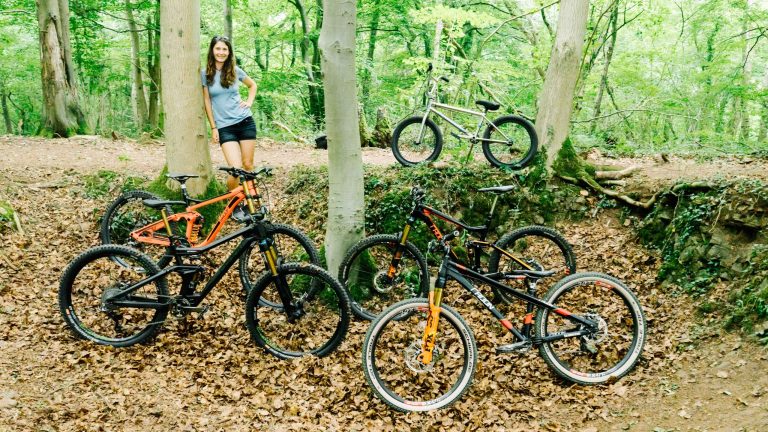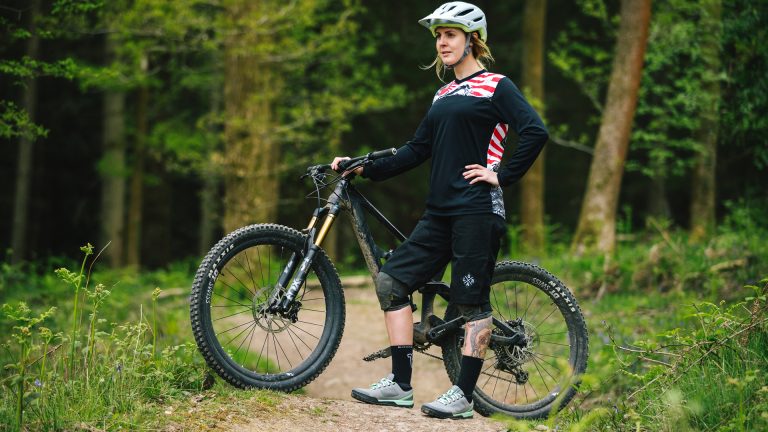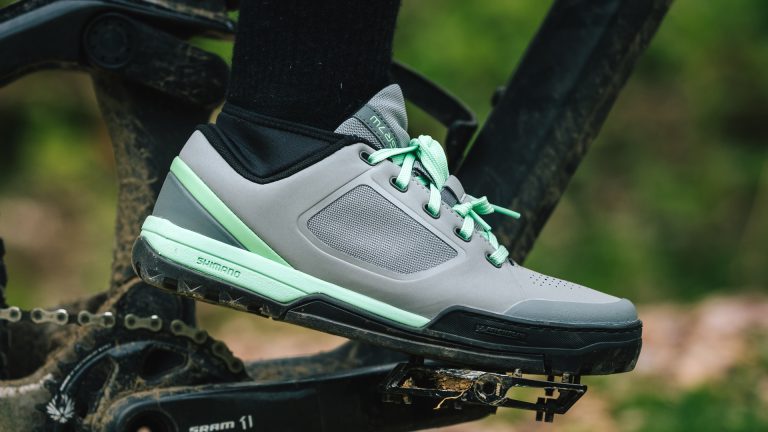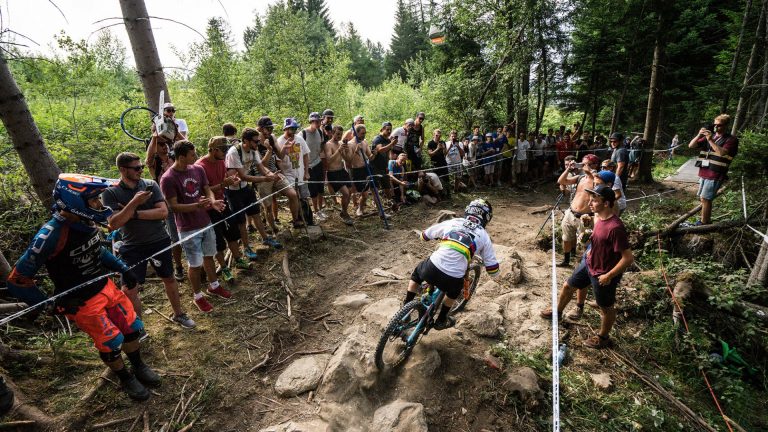There are three vital points of contact between your body and your bike: your hands, bum and feet. It’s essential to ensure your set up is dialled in so that each of these contact points is happy and comfortable, so you can achieve optimal performance.
How to choose the right saddle for you
Your legs are the pistons that drive your two wheeled steed, the power you put through them travels from your feet into the pedals and so on. With this much force and adrenaline connecting you and the bike, your feet need to be well positioned in for comfort.
When starting out in the world of mountains and dirt, shoes can often be the last investment. You’ll start out with flat pedals, often assuming that regular shoes will do – but that’s not the case. There are some important reasons for investing in a good pair of mountain shoes, clipped or otherwise.
Why Bother with MTB Shoes?
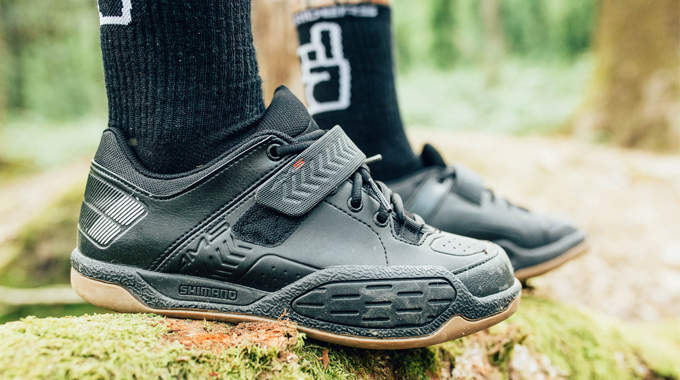
There’s some key features that a mountain bike shoe can offer with a regular shoe can’t. These subtle differences make a huge impact on your riding performance as well, so it’s important to get the right shoe and right fit…
FIT – A mountain bike shoe should be snug, more so than your loose casual trainers. You want some wiggle room for your toes, but you want your heel firmly planted in the cup and your shoes done up well. If you’re driving your bike around sharp corners, or getting some air, you don’t want your foot to be slipping inside the shoe, causing you to come off-balance.
PROTECTION – Whether you’re clipping in or riding flat, MTB shoes tend to have more protection around the toe and heel. This maintains the stiffness of the shoe as gives your foot some extra protection from rocks, roots and in the event of a fall.
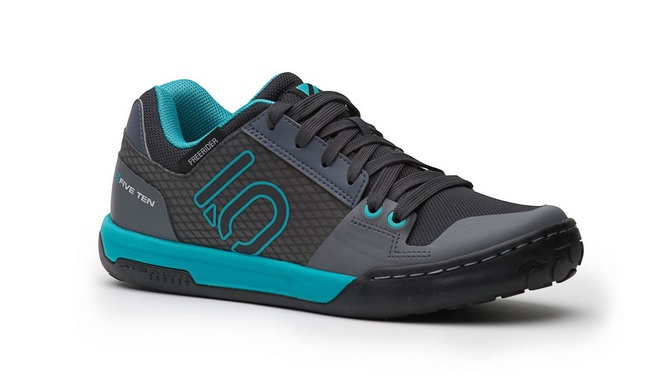
STIFFNESS – A biking shoe needs to be stiff for that protection element and to evenly distribute weight and power with every stroke. It’s the sole of the shoe that should deform to the pedal surface, and not the foot itself.
SOLE SUPPORT – The inner sole of the shoe should provide some form of arch support. A weak or collapsing arch can lead to your knee collapsing on the down stroke and you’ll lose a lot of pedal efficiency. The outer sole will vary for flats and clipless shoes. For flat shoes, you’ll commonly find a strong lattice design to improve contact with the pins on the pedals, or you’ll find a flatter surface made from a softer rubber which deforms around the pins. Either way will provide ample grip.
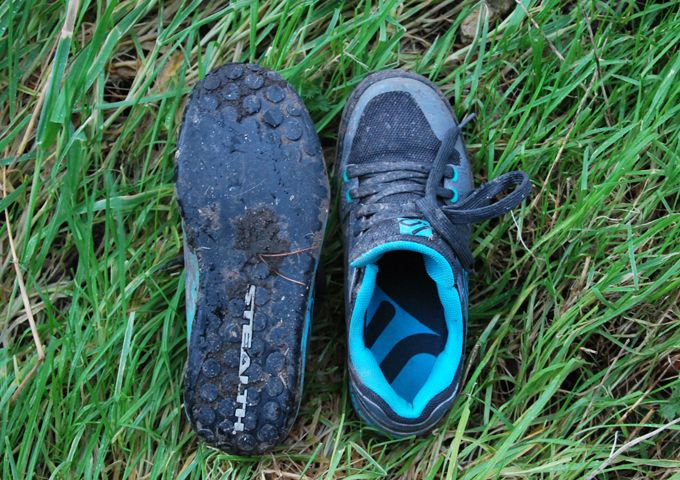
These important features keep the power channelled from your body and into the bike. Features that provide support and protection help minimise injury from impact and improve pedal efficiency overall.


